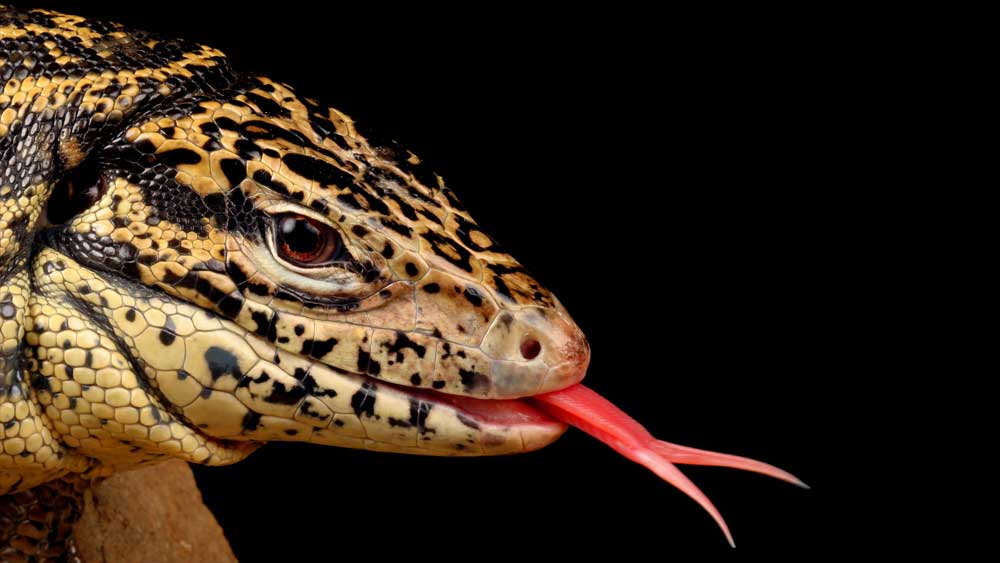The squat-bodied ugly creature is called the Argentine white and black Tegu (Salvator merianae) of the family Teiidae. Like most invasive species, it is threatening native animals in Georgia.1 These include gopher tortoises, turkeys, quail, and even the formidable American alligator. The Tegu is a ground-dweller that shelters in burrows found in mixed woodlands and grasslands.
The Tegu can multiply quickly, weighs about 10 pounds, and may get up to 4 feet long. It has large and powerful limbs with sharp claws, a long tail, and a long forked tongue.
Tegus are similar to monitor lizards (family Varanidae), but evolution theory states they are only distantly related. Their similarities are attributed to the strange idea of convergent evolution which is “similarity between two organisms…due to independent evolution along similar lines rather than descent from a common ancestor.”2 Convergence has always been a slippery term that is difficult to quantify.
Invoking convergent evolution negates the very logic of the argument from homology, which affirms that similarity implies common ancestry, except—we now learn—in those many, many cases when it does not.3
Creationists see the Tegu as a member of the created kind of lizards (the Squamata, the largest order of reptiles) that have moved in and filled a host of ecological niches since the Flood. As always, the fossil record shows that squamates have always been squamates.
References
1. Argentine Black and White Tegus. Georgia Department of Natural Resources, Wildlife Resources Division. Posted on georgiawildlife.com, accessed May 27, 2020.
2. Lawrence, E. 2011. Henderson’s Dictionary of Biology. New York: Pearson Education Limited, 142. See also Bethell, T. 2017. Chapter 10. In Darwin’s House of Cards. Seattle, WA: Discovery Institute Press.
3. Meyer, S. 2013. Darwin’s Doubt. New York: HarperOne, 133.
*Mr. Frank Sherwin is Research Associate at the Institute for Creation Research and earned his master’s degree in invertebrate zoology from the University of Northern Colorado.

















